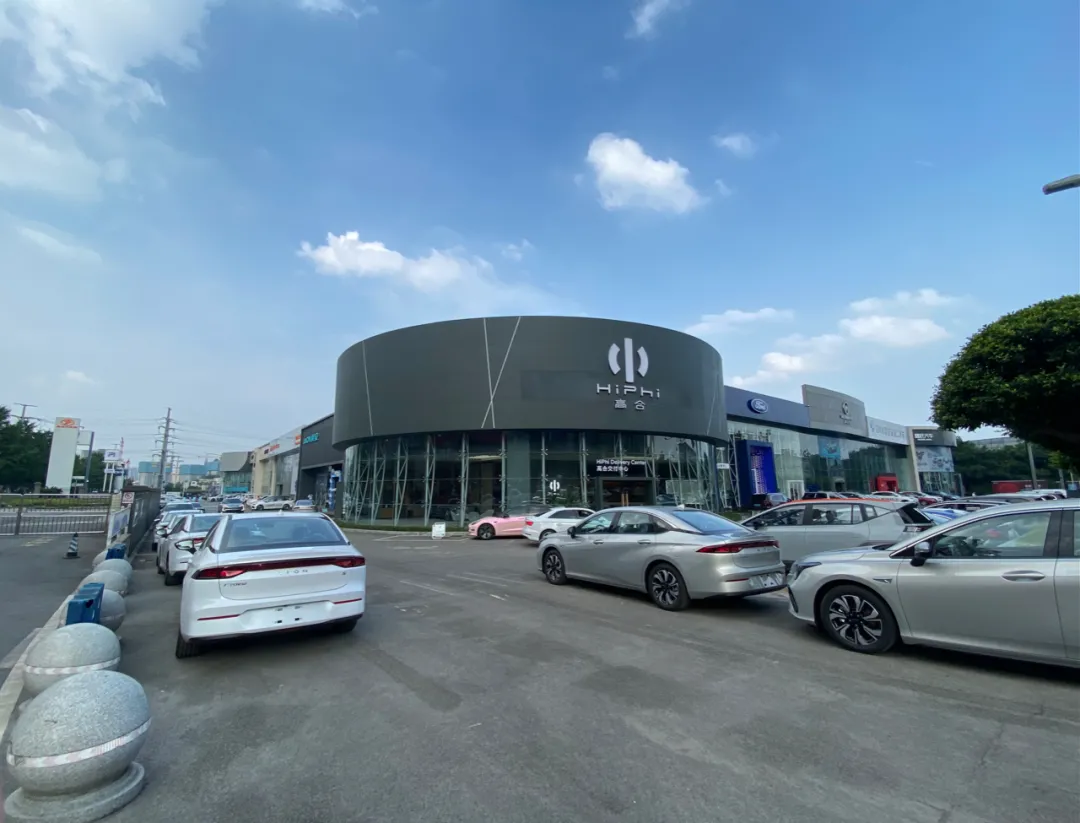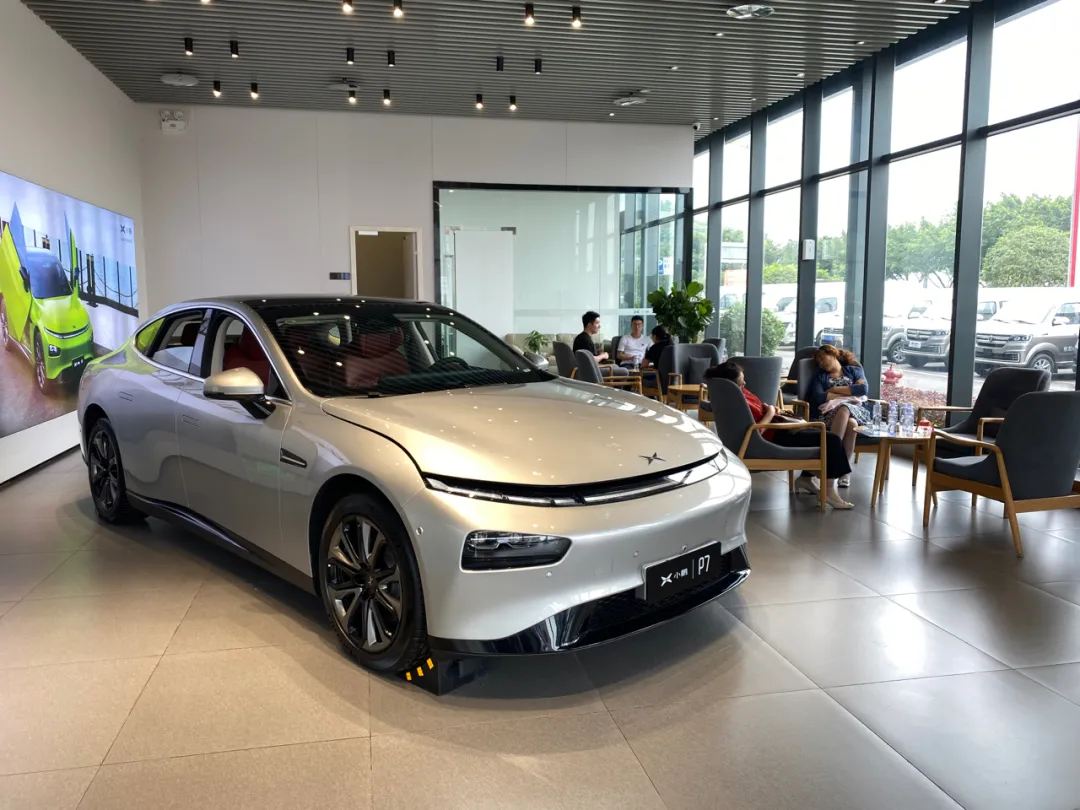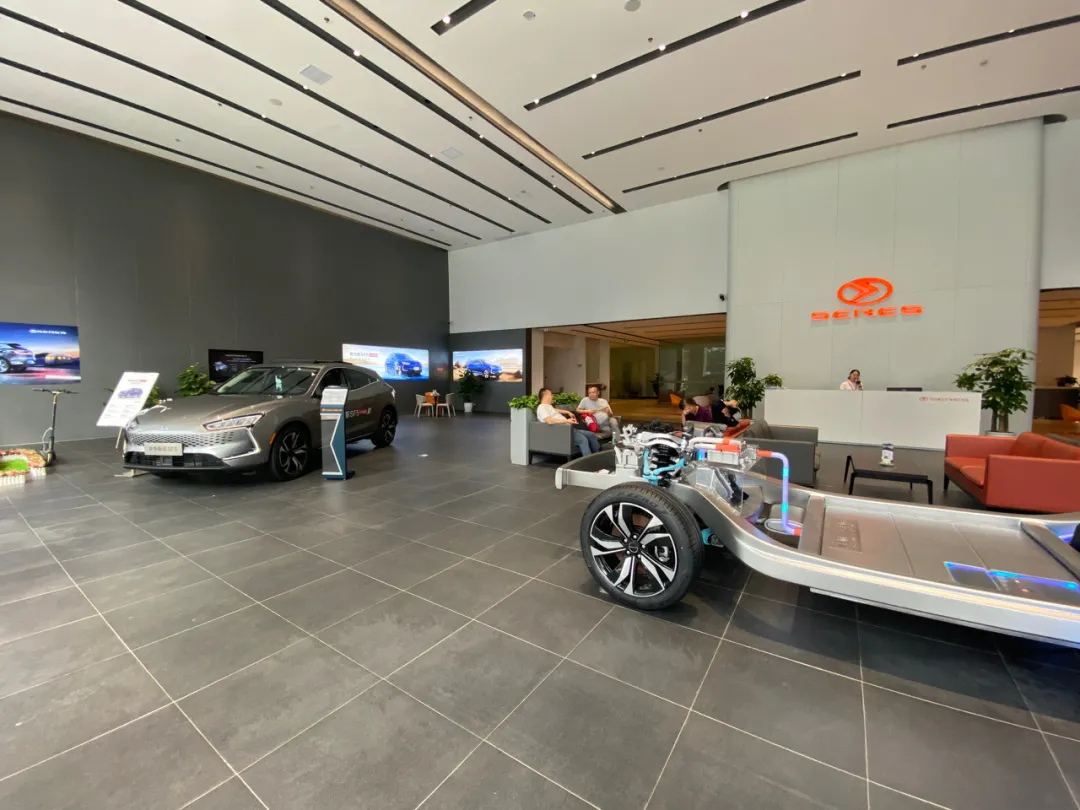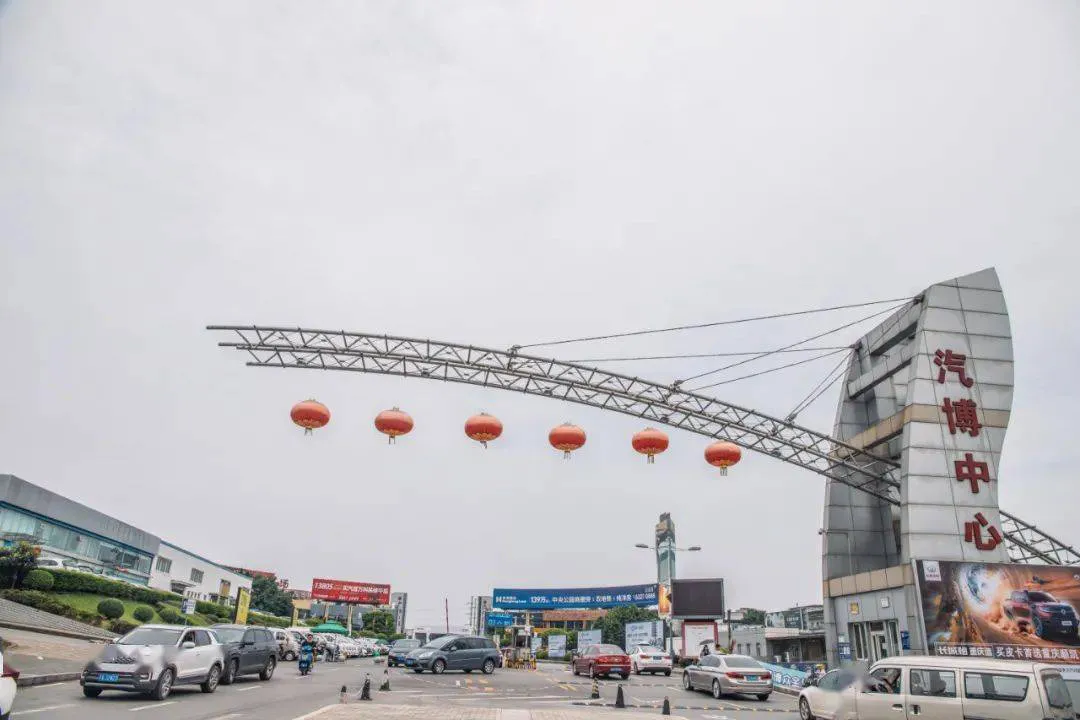OutingMedia focuses on the evolution of the automotive travel industry chain
By Zheng Wen
If you want to know about the Chongqing car market, you can’t avoid the Automobile Exhibition Center (“Auto-bo Center”). Everyone in Chongqing knows that it is the largest car dealership in the city.
Built in 2005 in the heart of the Liangjiang New Area, Auto-bo Center covers an area of 549 acres and cannot be ignored as the “Ten-Mile Auto City”. After 15 years of development, more than 800 car models are available for sale within the park.
The park includes ten functional areas, such as the famous car square, used car trading market, automobile supplies market, automobile parts market, vehicle management office, and automobile monitoring station. It is the largest professional automobile market in Southwest China, with the most concentrated brands, the largest sales volume, and the most complete service system.
Over the years, it has become the economic powerhouse of Chongqing, accounting for 40% of the city’s new car sales market share and 30% of the used car trading market share. The auto parts market has also become one of the most professional markets in the country, with an annual transaction volume of up to 3 billion yuan.
Trends and changes never miss a corner, including the largest car dealership in Chongqing. In recent years, the Auto-bo Center has undergone some changes, with many new brands entering the market here, including Xpeng, R Auto, Kandi, GAC Aion, Gaohe, WM, and NIO near the gasoline station. The layout is a new change indicating some new trends.
In other cities, new car brands are scrambling for the best exposure opportunities and competing for a place in the hottest commercial circles. But in Chongqing, these new brands still rely on the traditional Auto-bo Center and have to build exhibition halls in the traditional 4S dealerships to become one of them. The combination of tradition and change has a magical surrealism flavor.
This is a microcosm of how the southwestern city is seeking transformation under the waves of intelligent and electric vehicles.
Fifteen years ago, Chongqing heated up the Auto-bo Center in the north of the city. Where will the Auto-bo Center go 15 years later? This might mirror where Chongqing’s automotive manufacturing industry is heading.

Kandi and other new brands can’t support the dream of “Detroit of the East”
XPeng Motors’ showroom stood at the T-junction of Huguang Street and Jingguo Avenue.
On a hot afternoon of June 10th, unlike the traditional 4S dealerships like Dongfeng Qichen next door that were sleepy, there were still two or three waves of visitors in XPeng’s showroom. After entering the store, three cars were placed in a slightly cramped space, including two P7s and a G3 in a L-shape space.
Mr. Dong, the salesman, was familiar with the car model introduction and the advantages of comparisons of new energy models, which is convincing enough to demonstrate the confidence he has in the brand.Do you mainly focus on new energy vehicles? There are only a few popular models on the market currently, not to mention the Model 3, which has had so many problems recently. The ES6 from NIO is not cost-effective because many things like NOMI and charging stations are not standard and have to be added at extra cost. I can send you a comparison chart of BYD Han and other similar models on WeChat…
“Domestic products are starting to shine.” When he escorted the reporter from “Traveling with 100 Persons / AutocarMax” out of the store, the confidence and grace remained inside him, calmly helping to show the location of NIO and Saleen stores.

“I was trained as a Saleen salesman before XPeng Motors. Huawei Select is actually like JD.com’s Choice and NetEase’s Yanxuan. It doesn’t mean that Huawei is participating in car manufacturing. Huawei has so many stores all over the country. We just use the convenience of the stores to sell cars.” Mr. Dong did not hide his disdain for Saleen.
If the confidence shown by the XPeng sales is rare, the Saleen sales are at two completely different extremes.
When the reporter came to the Saleen showroom to inquire, Saleswoman Tang could not even wait for the question to finish before answering eagerly: “Is the electric drive system of this car co-developed with Huawei? In addition, the car multimedia and audio systems respectively use HUAWEI HiCar and HUAWEI Sound audio technology.” It is evident that most of the customers who come to consult are there because of Huawei.
At the Shanghai Auto Show in April, Saleen and Huawei jointly launched the Saleen-Huawei Select SF5 Extended-range Electric SUV. Simultaneously, Saleen-Huawei Select SF5 was made available for pre-order in Saleen’s experience centers, official app, Huawei Experience Stores as well as the online and offline Huawei malls. The two-wheel drive and four-wheel drive versions of the car are priced at 216,800 yuan and 246,800 yuan, respectively.

The entire spacious exhibition hall displays only two cars, with an electric car chassis structure placed in the middle. This arrangement conveniently allows Tang to introduce which parts are equipped with Huawei technology. “To be honest, we are really grateful to Huawei. There are indeed many customers now.”
According to the May data released by Changan Automobile, sales of new energy vehicles amounted to 3,038 units, an increase of 75.51% year-on-year. Unfortunately, the main sales model of new energy vehicles is not the Saleen-Huawei Select SF5. Data released by DCD showed that the SF5 from Saleen only sold 204 units in May (less than the entire sales month), indicating that there is a lot of talk but little action.In fact, consumers have already voted with their feet. On the streets of Shancheng District, in addition to the classic online ride-hailing cars, private cars only occasionally see Model 3, BYD Qin EV, Han EV, Li ONE, and Xpeng P7. According to the April passenger car sales data released by the Chongqing Automobile Business Association, the narrow passenger car sales in April were 33,000 units, a year-on-year increase of 6.7%. Among them, fuel vehicles accounted for 88.6%; new energy vehicles accounted for 9.2%. From a brand perspective, BYD surpassed Tesla and ranked first with a market share of 13.3%, while Tesla and Changan Automobile ranked second and third, respectively.
Specifically, nine car models have monthly sales exceeding 100 units, among which the Li ONE surpassed the Model 3 to become the top seller; Tesla has been constantly plagued by negative news and has experienced a significant decline in sales; while there are three BYD car models with sales exceeding three digits. Relatively speaking, the base is still low, and there is still a large room for growth in the entire market.
A transformation is happening, but it seems that the speed of change is not fast enough. This city, which has taken off with the automobile industry, has encountered some difficulties.
In 2013, Detroit, the city supported by the American automobile industry, applied for bankruptcy. Almost at the same time, the Chongqing Municipal Party Committee and the city government decided to build Chongqing as the “Detroit of China”. The Chongqing Municipal Government issued the “Chongqing Automobile Industry Three-year Revitalization Plan”, aiming to build Chongqing into China’s largest automobile industry manufacturing base and achieve an output of 4.8 million vehicles by 2015.
Starting from 2009, riding on the leapfrog growth of China’s automobile industry, the scale of Chongqing’s automobile industry expanded from 1.1865 million vehicles in 2009 to 2.6093 million vehicles in 2015, making it the largest automobile production base in the country. In 2016, this industry reached its peak, with automobile output reaching 3.16 million units and the localization rate of auto parts reaching 80%. The automobile industry also helped Chongqing’s GDP achieve a growth of 10.7% that year.
This land has the largest number of automobile manufacturers in the country, including more than 20 brands such as Changan, Ford, Xiaokang, Lifan, Qingling, Hanteng, Jinbei, Weichai Yinzhi, Hyundai, and Mazda, covering more than ten districts and counties such as Yubei, Jiangjin, Fuling, Wanzhou, and Hechuan. The supply chain brought about by the automobile industry has also nurtured thousands of auto parts supporting manufacturers with a scale above. However, starting from 2018, Chongqing’s auto companies began to experience collective disappointment.# Changan automobile sales fell sharply; Changan Ford sales were cut in half; Changan Suzuki withdrew from China; Beiqi Yinxiang encountered operational difficulties; Lifan entered bankruptcy reorganization… The auto manufacturing industry fell by 17.3% in 2018.
Over the past two years, the Chongqing automobile industry has struggled to transform and pursue a new direction.
In 2020, among the traditional automobile companies, only Changan has maintained its advantage in local operations. With a total sales volume of 563,360 vehicles, it won first place, nearly double the sales volume of the second place SAIC-Volkswagen. From the previous round of industrial chain development, it can be seen that the obvious characteristics of the Chongqing automobile industry are large but not strong, lacking the innate power and momentum for development.
Ironically, the term “Detroit,” representing traditional forces, has been overshadowed by the “Wall Street” newcomers. Detroit, once known as the “Rust Belt” and now a thing of the past, urgently needs a profound transformation.
Similarly, Chongqing no longer needs to cling to the fading motorcycle gangs, and Detroit’s dream has also become a shell that must be shed on the road to Chongqing’s transformation.
Conquering “Large but Not Strong” and Finding a Way Forward in Growing Pains
The bigger wave is still ahead.
“If the Chongqing automobile industry does not seek transformation, we will not only face the problem of whether the pillar industry can sustain, but also the employment problem of hundreds of thousands of people behind it. The consequences are unimaginable!” Ju Yan, Deputy Director of the Chongqing Economic and Information Commission, has expressed this pain openly at public events.
Of course, after experiencing growing pains, Chongqing is now jumping on board a brand-new new energy industry chain.
As a result, the Chongqing government has made great efforts in formulating policies to expand private consumption of new energy vehicles, improve infrastructure, and accelerate the promotion and application of new energy vehicles.
For example, discounts and incentives are offered to new-energy passenger vehicles sold in the city and registered to the city, and financial incentives are provided to vehicle manufacturers by the city and districts/counties where the vehicle enterprises are located, amounting to 25% of the discounted price. Additionally, there are subsidies for public-use vehicles such as ride-hailing and taxis. At the consumer end, new energy vehicle owners enjoy free parking and subsidized charging fees. Starting from 2021, Chongqing is expected to allocate over 1 billion yuan to support the entire new energy supply chain.
From a data perspective, with the series of policies stimulated in Chongqing, 36,400 new energy vehicles were promoted and put into use in the city in 2020; as of 2020, Chongqing has promoted and applied 100,000 new energy vehicles and built more than 2,000 public charging stations and 17,000 public charging piles. From the perspective of infrastructure, they have already achieved a leading position in the western region.”Currently, most of the ride-hailing cars are new energy vehicles. For taxis in the main urban areas of Chongqing, there are over 2000 new energy taxis in trial operation.” The taxi driver introduced on the way from the airport to downtown.
“I prefer driving new energy vehicles myself. Even though my Haval EV has a shorter range, I still like the driving experience of new energy vehicles more than traditional fuel vehicles. I think the BYD Han and XPeng P7 are pretty good options. Charging stations are readily available now, making charging very convenient.” The ride-hailing driver has discovered the advantages of new energy vehicles through long-term practice.
Countless people in Chongqing have been swept up in this wave of electrification, pulled and changed by it.
Chongqing is consciously making corresponding arrangements in this new competition. In addition to the investment from Geely Technology to complete the bankruptcy reorganization of Lifan, Huawei’s collaboration with Changan and Siles, there is also the introduction of the BYD Battery Research Institute and the production base for power batteries. The Geely high-end new energy project is also accelerating in the Liangjiang New Area…
However, these are still far from enough.
For Chongqing, being big but not strong, lacking innovation, and failing to occupy the high-end of the industrial chain is a typical industrial weakness. Every 8 cars in China is made in Chongqing, but the value-added of the products is not high, resulting in low revenue and profits per vehicle in the automotive industry’s main business.
Data shows that in 2017, the GDP ratio of scientific research funding in Chongqing was only 1.88%, lower than the national average of 2.13%, and ranked outside the top ten cities. The number of patent authorizations is also around 15th place. This is obviously unreasonable for a manufacturing powerhouse.
From an objective perspective, Chongqing’s national key laboratories and engineering technology research centers do not have an advantage. In this round of industrial transformation, Hefei, which suddenly became popular on the internet, is largely based on the cultivation of the science and technology research and development industry chain, including education, and has been dormant for a long time before suddenly taking off.
The most important layout is that Chongqing Science City quietly started construction this month. In the “Chongqing Urban Enhancement Action Plan,” it is mentioned that the Science City relies on the university city and links Jiu Longpo, Beibei, Jiangjin, and Bishan to form a western “Smart Valley.”
Perhaps, this is precisely the key for Chongqing to find a way out. The youngest direct-controlled municipality should abandon the shackles of past glories and take a bold move. Only with a perfect science and technology R&D chain can Chongqing attract and incubate more high-quality new energy projects.# The Opening Animation of “The Hidden Corner”
Several children run back and forth in a complex building of intricate stairs and maze-like structures, trying to escape from the shadow. Meanwhile, Chongqing, a city that is transformed, inflated and surrealistic in 3D, is also searching for its own way out in the torrential history.
Fortunately, just like the “mountainous character” of the city that once held up the initial reform and opening up movement with its feet and legs, this city never accepts its fate.
This article is a translation by ChatGPT of a Chinese report from 42HOW. If you have any questions about it, please email bd@42how.com.
